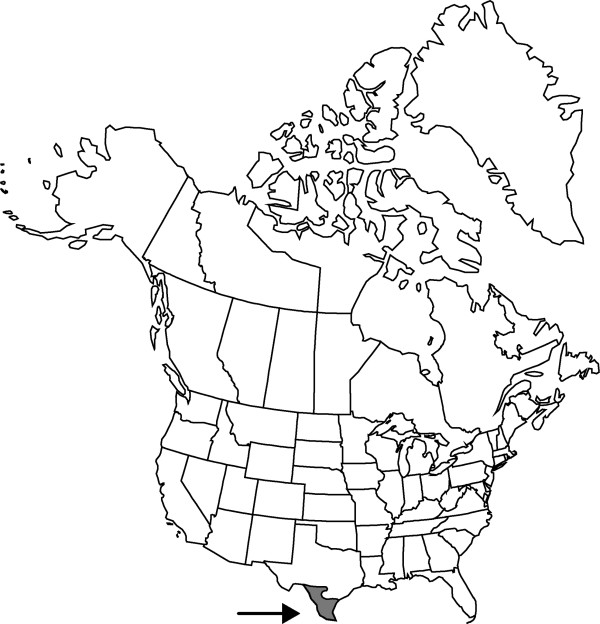Ferocactus hamatacanthus var. sinuatus
Cact. Succ. J. (Los Angeles) 41: 128. 1969.
Stems spheric to ovoid, 10–30 × 7.5–20 cm; ribs typically 13, undulate to deeply crenate. Spines 12–16 per areole; central spines 4 per areole, principal central spine strongly flattened, 50–90 × 1.3–3 mm, sometimes ± papery. Flowers 6–7.5 × 7–9 cm; stigma lobes 8–10. Fruits green, yellow-green, or olive, 20–25 × 10–15 mm. Seeds ca. 1 mm.
Phenology: Flowering late summer–fall.
Habitat: Tamaulipan thorn scrub
Elevation: 0-500 m
Distribution

Tex., Mexico (Nuevo León, Tamaulipas).
Discussion
Contrary to L. D. Benson’s (1982) map of Ferocactus hamatacanthus, all populations in southern Texas are var. sinuatus. The southern Texas populations form a geographically cohesive taxon superficially similar to Hamatocactus bicolor in their narrow ribs and overall green aspect unlike the coarse, strongly xerophytic F. hamatacanthus var. hamatacanthus farther west. Only the populations in the lower Pecos River region might be intermediates between vars. sinuatus and hamatacanthus.
Selected References
None.